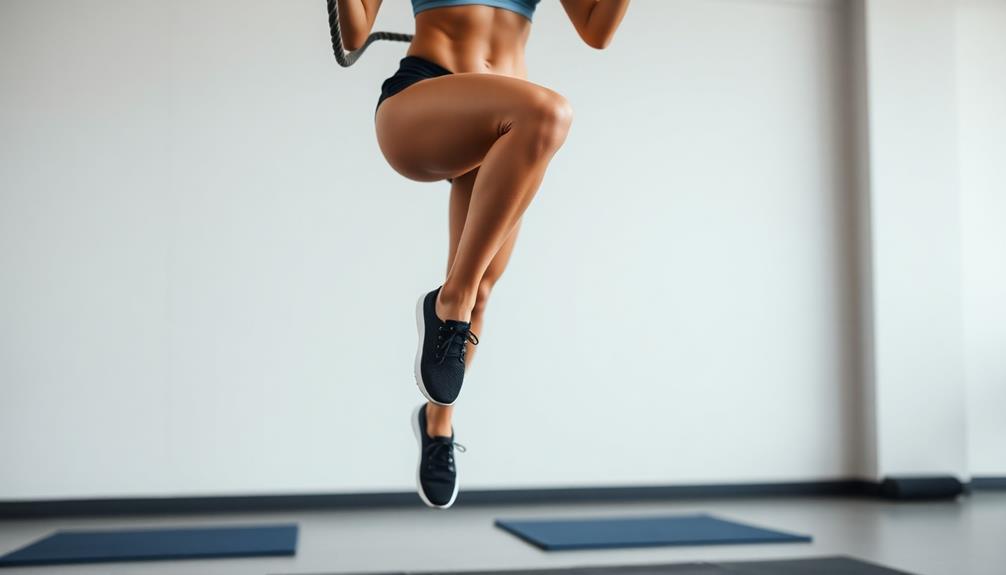Jump rope builds strong leg muscles through its high-impact, repetitive motions. As you skip, your calves, quads, hamstrings, and glutes are constantly engaged. The takeoff phase activates your calves and quads, while landing works your hamstrings and glutes. This continuous cycle strengthens and tones your lower body muscles. Jump rope also improves fast-twitch muscle fibers and endurance, similar to plyometric training. It's an efficient calorie-burner, torching 200-300 calories in just 15 minutes. Beyond muscle building, jump rope enhances cardiovascular health, lowers resting heart rate, and boosts overall stamina. To maximize these benefits, proper technique and consistent practice are key.
Core Insight
- Jump rope engages nearly every leg muscle, including calves, quads, hamstrings, and glutes, promoting overall strength.
- Repeated jumping movements create a plyometric effect, improving fast-twitch muscle fibers and endurance.
- The continuous cycle of takeoff, flight, landing, and rebound strengthens and conditions the lower body.
- Calves are the primary muscles worked, as they push you off the ground with each jump.
- Varying jumping styles and increasing duration can further enhance leg muscle development and strength.
The Science Behind Jump Rope
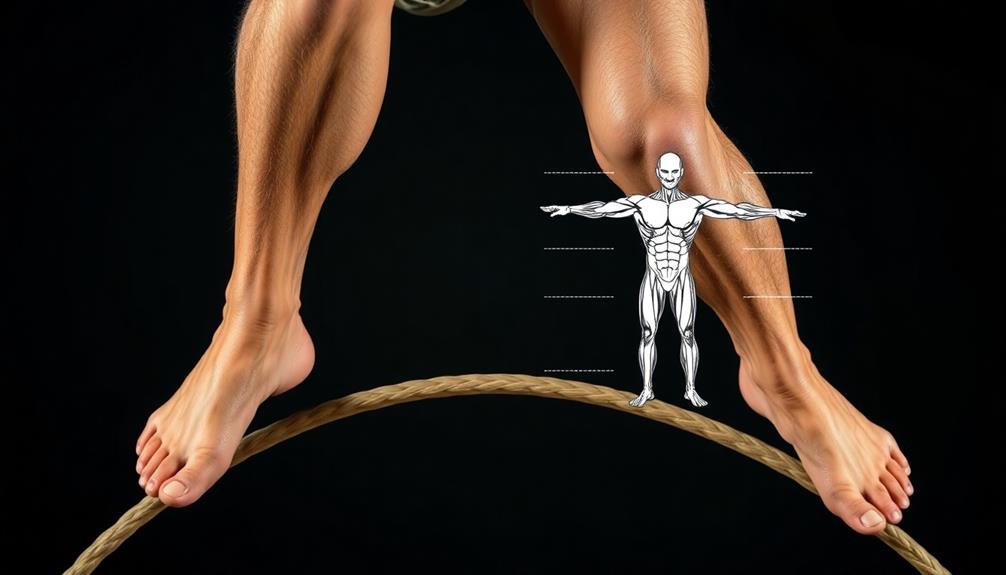
Jumping rope works nearly every muscle in your legs and core. This intense exercise works your calves, quads, hamstrings, and glutes all at once. As you jump, your calf muscles push you off the ground. At the same time, your quads and hamstrings work together to keep your knees and hips stable. Jumping rope over and over creates an effect like plyometric training. This makes your muscles better at generating power quickly. It improves your fast-twitch muscle fibers, making you stronger and more explosive. The constant impact also makes your muscles absorb and redistribute energy better. This leads to stronger legs and better endurance overall.
Jump rope also works your core muscles, including your abs and lower back. They work to keep you balanced and maintain good posture as you jump. This full-body workout improves coordination and agility.
Targeted Leg Muscles
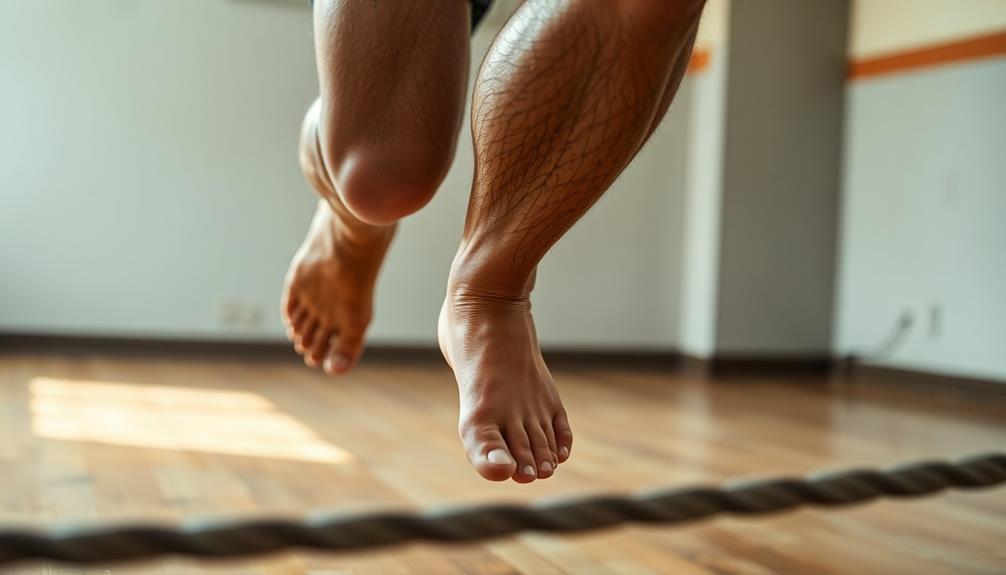
Skipping rope is a great workout for your legs. It mainly targets your calves, the muscles at the back of your lower legs. They work hard to push you off the ground and soften your landing with each jump.
But your calves aren't doing all the work alone. Your quadriceps, the muscles at the front of your thighs, help straighten your knees as you jump. The hamstrings, at the back of your thighs, assist by bending your knees and keeping you stable.
Skipping rope is an efficient way to strengthen your lower body because it works several muscle groups at the same time. Even your glutes, the muscles in your buttocks, pitch in by helping to extend your hips and maintain balance. The muscles in the front of your shins also get involved by lifting your toes with each jump.
Since skipping rope involves continuous, repetitive movements, these muscles are consistently engaged throughout your workout. This leads to improved strength and endurance in your legs over time.
Biomechanics of Skipping

Skipping is a great workout for your legs because it uses many muscles and joints. When you jump rope, there are four main parts:
- Takeoff: You push off the ground using your calves and quads.
- Flight: You lift your body using your core and hip muscles.
- Landing: You land and absorb the impact with your hamstrings and glutes.
- Rebound: You get ready for the next jump using your calves and ankles.
As you skip, you keep going through these steps over and over. This makes your muscles work hard and helps them get stronger and last longer. Your legs push you up, keep you steady in the air, and handle the landing. This cycle of jumping and landing is a great way to build strength and endurance in your lower body.
Calorie-Burning Potential

Jumping rope is a great way to burn calories fast. You can burn 200-300 calories in just 15 minutes, depending on how hard you work and how much you weigh. This makes it a perfect choice if you want to get the most out of your workout time.
Jumping rope works many muscles at once, which gets your heart pumping and speeds up your metabolism. This means you'll keep burning calories even after you stop jumping. You can also change up your jumping style to make it harder and burn even more calories. Try high knees, double unders, or switching feet.
The key is to stick with it. The more you jump rope, the more calories you'll burn over time. Just make sure to follow any rules for using workout gear or spaces.
Cardiovascular Benefits

Jumping rope is great for your heart health. It gets your heart pumping and blood flowing, which makes your heart muscle stronger. The more you jump, the better your heart gets at its job.
Here are some ways jumping rope helps your heart:
- Lowers your resting heart rate
- Helps you breathe better
- Lowers your chance of getting heart disease
The more you jump rope, the longer you can exercise without getting tired. This helps you with other activities too, making your day-to-day tasks easier. Jumping rope also helps keep your blood pressure and cholesterol in check, which is good for your heart.
Proper Jump Rope Technique
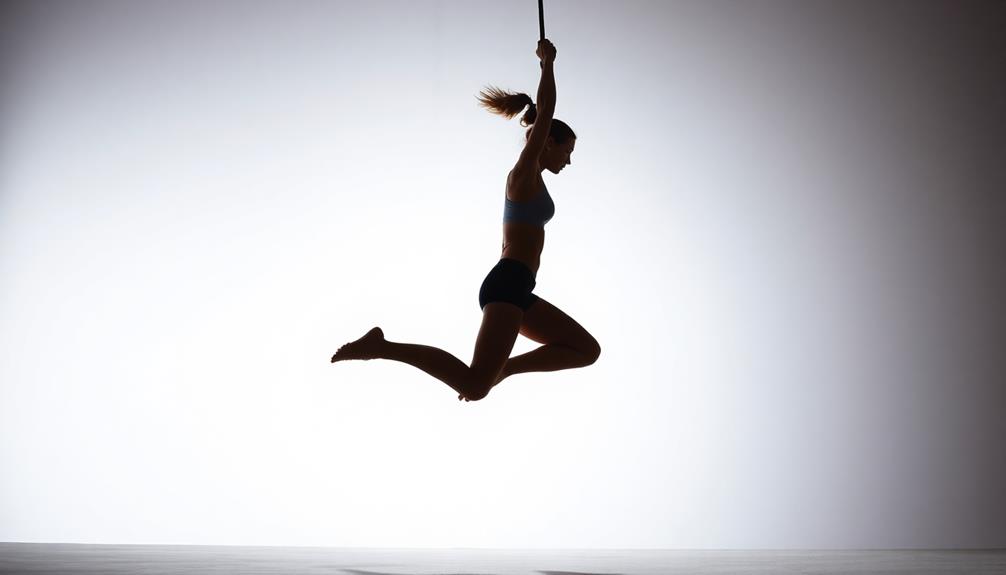
To get the most from jumping rope, you need good form. Stand with your feet together and the rope behind you. Hold the handles loosely with your elbows in. Swing the rope over your head with your wrists and jump when it gets to your feet. Land lightly on your toes and keep your knees bent. Calf sleeves can help with pain and performance. Keep your head up, shoulders relaxed, and take small, fast jumps. As you get better, try different moves like switching feet or high knees. Go slow at first and speed up as you build strength.
Incorporating Jump Rope Workouts
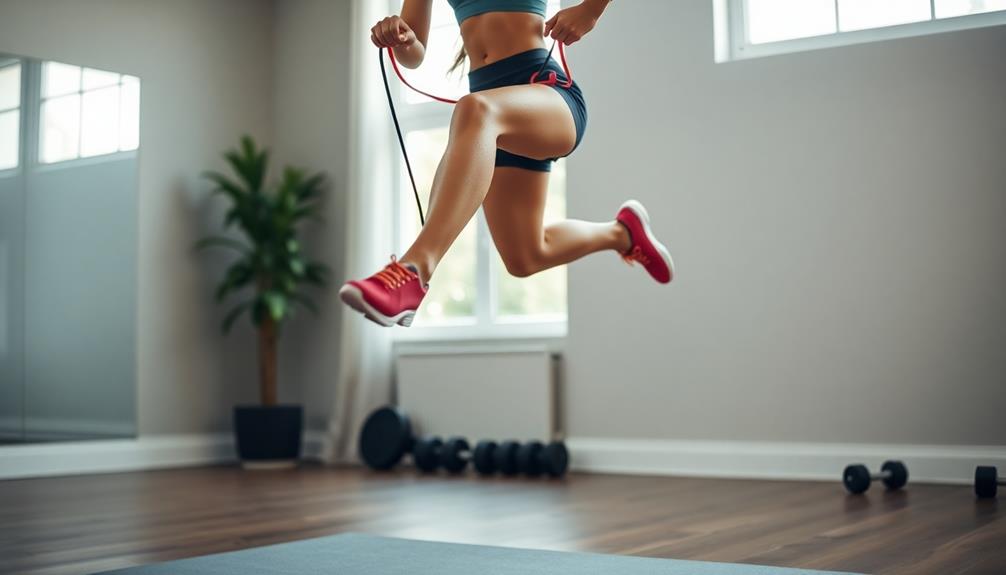
To add jump rope to your workouts, start small and slowly increase your time. Begin with 5-10 minute sessions. Focus on good form and a steady rhythm. As you get better, make your workouts 15-20 minutes or more.
Try jump rope in your routine by:
- Using it to warm up before weights or cardio
- Doing it between sets of other moves
- Making jump rope intervals part of your workout
Try different jump rope styles to work different muscles and keep it fun. Alternate feet, do high knees, or try double unders to test yourself. Listen to your body and rest when you need to. Keep at it and you'll get stronger legs, better coordination, and improved overall fitness.
Equipment and Variations
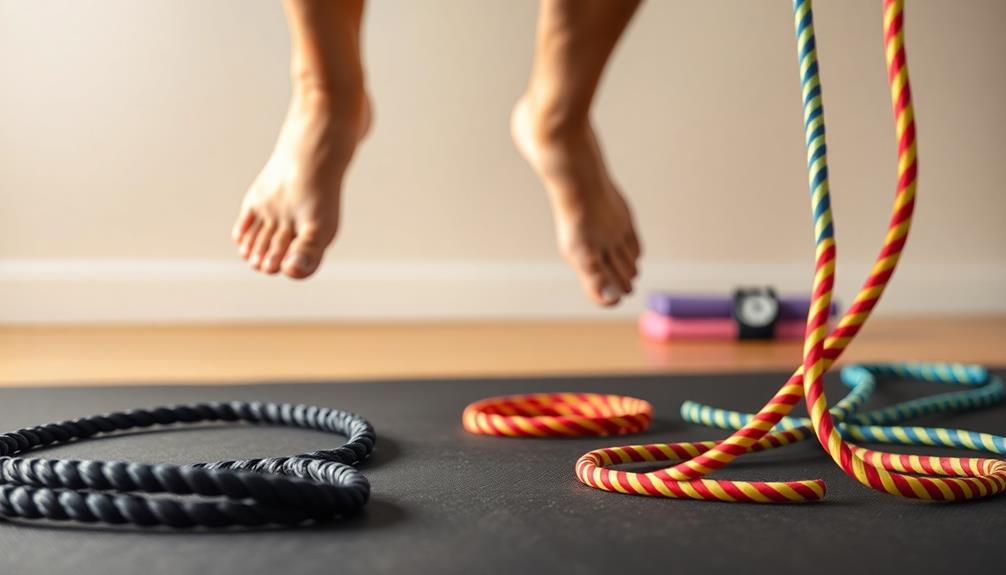
Jump ropes are simple tools, but you have a few options. Basic PVC ropes work well for beginners. Speed ropes help you jump faster, while weighted ropes make your legs work harder. Like compression sleeves, the right jump rope can boost your performance and recovery. Look for a rope made of durable materials.
You can also change up your jumping style to work different muscles. Try switching feet, lifting your knees higher, or doing double jumps. Crossovers and side swings test your coordination too. Jumping on grass, concrete, or a mat will challenge your legs in different ways. Mixing up your routine keeps things interesting and strengthens your legs effectively.
Frequently Asked Questions
Can Jump Rope Help With Bone Density in the Legs?
Yes, jump rope can boost your leg bone density. When you jump, you're putting stress on your leg bones, which stimulates them to grow stronger. It's an excellent weight-bearing exercise that'll help strengthen your skeleton over time.
Is Jump Rope Suitable for People With Knee Problems?
If you have knee problems, jump rope may not be suitable for you. It's a high-impact exercise that can strain your knees. You'd be better off consulting your doctor and considering low-impact alternatives like swimming or cycling.
How Long Should a Beginner Jump Rope to See Results?
Start with 5-10 minutes daily, three times a week. Gradually increase to 15-20 minutes as you build stamina. You'll likely see improvements in cardiovascular fitness within 2-4 weeks, with muscle tone changes following in 4-6 weeks.
Can Jump Rope Replace Running as a Cardio Workout?
Yes, you can replace running with jump rope for cardio. It's an excellent alternative that'll give you a high-intensity workout. You'll burn calories, improve coordination, and boost your cardiovascular fitness. It's also lower impact than running.
Are There Age Restrictions for Starting Jump Rope Training?
You can start jump rope training at almost any age. There aren't strict age restrictions, but you'll want to take into account your fitness level and any health concerns. It's always best to consult your doctor before beginning any new exercise routine.

